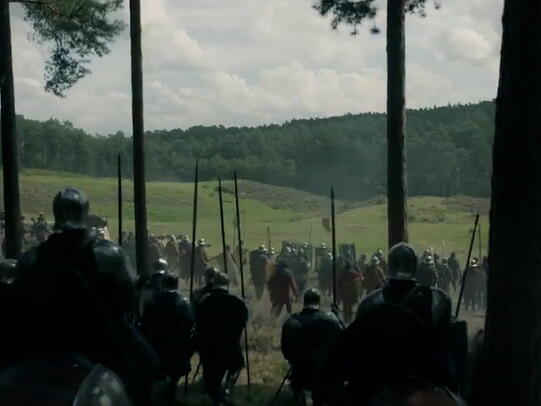Physical Address
304 North Cardinal St.
Dorchester Center, MA 02124
Physical Address
304 North Cardinal St.
Dorchester Center, MA 02124

“No matter how major a writer it is, no matter how great the book, there always seems to be someone on hand who thinks he can do better,” blogged George RR Martin, creator of A Song of Ice and Fire, back in May of this year. Was this a sly dig at the television writers who have brought his work to the screen? Two weeks later, the second series of House of the Dragon, based on his book Fire & Blood, was released. With the season finale airing on Monday night, and the second chapter of this adaptation closed, have the show’s writers failed to heed the words of the fantasy maestro whose work they’re adapting?
On the strength – or weakness – of this climactic episode, it is hard to disagree with Martin. The tangled politics of Westeros’s civil war found the Prince Regent, Aemond (Ewan Mitchell), plotting the deposition of his ailing brother Aegon (Tom Glynn-Carney). Meanwhile, the outcast Targaryen, Queen Rhaenyra (Emma D’Arcy), had to fend off the itching sword-hand of her consort, Prince Daemon (Matt Smith). Three extra dragonriders – Hugh, Ulf, and Addam – had given Rhaenyra a strategic advantage in the war. And with her forces amassed on Dragonstone, at the mouth of Blackwater Bay, King’s Landing looked doomed to fall.
And so it almost proved, in this finale, as showrunner Ryan Condal inched his pieces closer to the events described in Martin’s works as “the dance of dragons”. “Inch” being the operative word. As riders mount their winged steeds, war galleys return from the Free Cities, and expendable soldiers strap into their armour, the series… ended. Viewers patiently awaiting siege and sack will have to tune in again for the next chapter. I ended my review of the last series with the following sentence: finally, after a season of place-setting and world-building, the dance of dragons is ready to begin. It’s a testament to the glacial pace of the narrative that I can reuse it here; once again, we find ourselves merely teased with the prospect of total war.
In the absence of fiery action, the finale – and the whole of the second series – relied upon its stellar players. Ewan Mitchell and Emma D’Arcy have cemented their positions as the show’s MVPs, and Simon Russell Beale’s fleeting appearance in this curtain-dropper is a reminder of the excellent work he’s done as Ser Simon Strong. But far greater focus is placed on middling, placeholder characters like Mysaria (Sonoya Mizuno), Tyland Lannister (Jefferson Hall), and Corlys Velaryon (Steve Toussaint), who fail to light up the screen. Even characters like Alicent Hightower (Olivia Cooke) and Criston Cole (Fabien Frankel) seem gripped by ennui. “It’s all a story,” a dream version of Queen Helaena (Phia Saba) declares, “and you’re but one part of it.” But few of these parts seem complimentary to the overall tale.
The whole series has been a fudge, hamstrung by bizarre creative choices. Cooke, for example, is a fine actress, but she is a 30-year-old who could more easily play a 20-year-old than a 40-year-old. As a result, her motherly exchanges with Aegon, Aemond, and Helaena have always had the air of some school production of A Streetcar Named Desire, where one poor adolescent has their hair sprinkled with talc to play Blanche. The difficulty of these interactions perhaps explains the desperation of the show’s writers to reunite Alicent and Rhaenyra. Their second shared scene of the season – a parlay at Dragonstone – was even more shoehorned than the first. “I do not wish to rule, I wish to live,” a despairing Alicent told her former bestie. “A son for a son,” came the icy response.
All this is a bit meaningless (and those with an interest in Westerosi history will find that exchange both implausible and inconsequential). A problem the show has had, from its outset, is that it is moving inexorably towards the deaths of its main and favoured characters. This second season has been a desperate attempt to pump the brakes, to delay the outset of a war that will leave only a few, thinly written, survivors. It is why the leftover plot feels so desiccated; the juicy meat of, literal, fire and blood is being withheld.
Fire & Blood is not a conventional novel. It does not offer its adaptation the emotional resonance or character development of A Game of Thrones and its sequels. Where they are painted on a vast, lush canvas, Fire & Blood is a sketch. And with a sketch you either accept the limitations of the form or start colouring outside the lines. This finale was typical of a season of television that has done both, leaving a lasting image that is both thinly drawn and erratically augmented.
Source: source names



